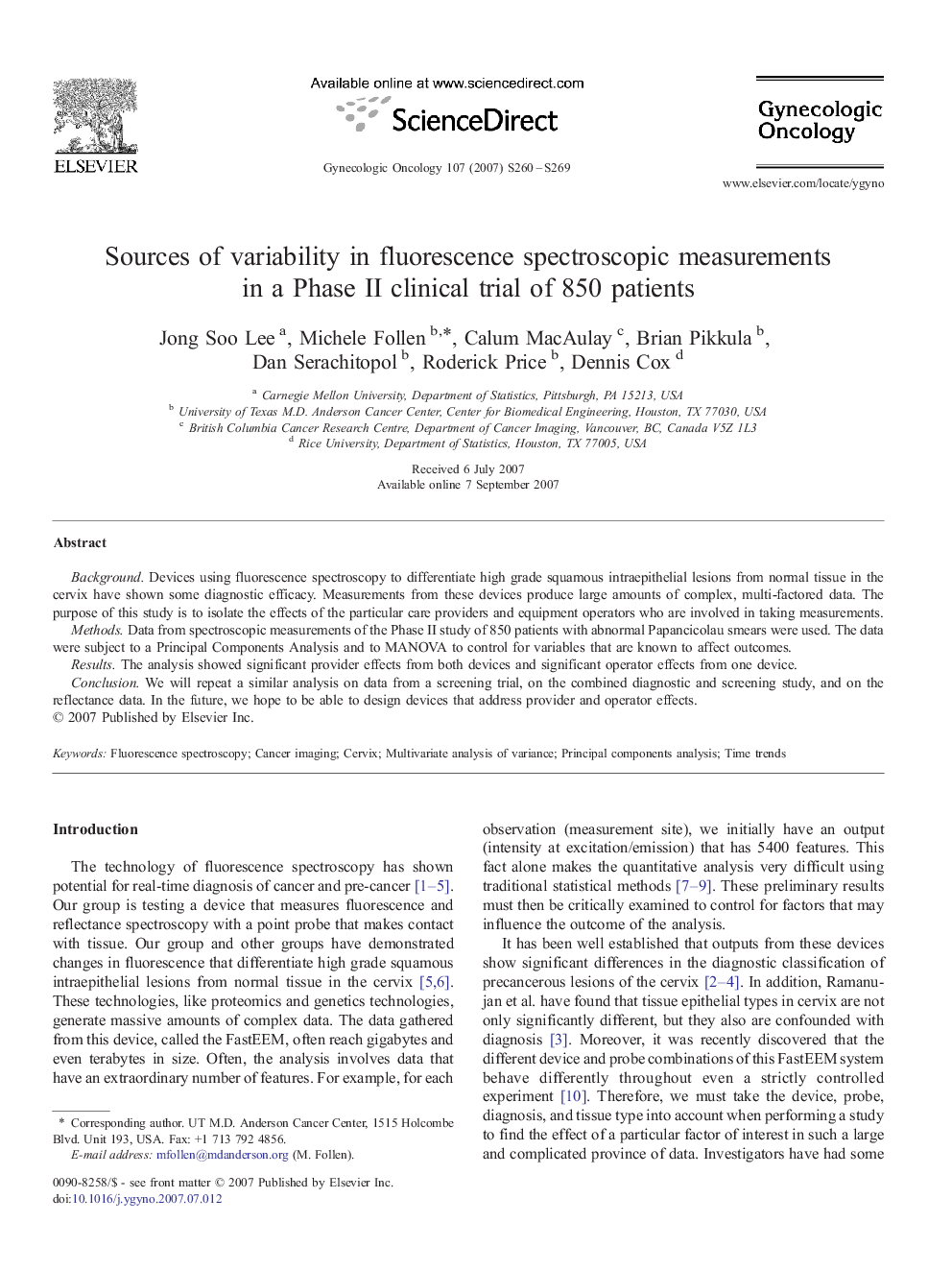| Article ID | Journal | Published Year | Pages | File Type |
|---|---|---|---|---|
| 3946336 | Gynecologic Oncology | 2007 | 10 Pages |
Background.Devices using fluorescence spectroscopy to differentiate high grade squamous intraepithelial lesions from normal tissue in the cervix have shown some diagnostic efficacy. Measurements from these devices produce large amounts of complex, multi-factored data. The purpose of this study is to isolate the effects of the particular care providers and equipment operators who are involved in taking measurements.Methods.Data from spectroscopic measurements of the Phase II study of 850 patients with abnormal Papancicolau smears were used. The data were subject to a Principal Components Analysis and to MANOVA to control for variables that are known to affect outcomes.Results.The analysis showed significant provider effects from both devices and significant operator effects from one device.Conclusion.We will repeat a similar analysis on data from a screening trial, on the combined diagnostic and screening study, and on the reflectance data. In the future, we hope to be able to design devices that address provider and operator effects.
